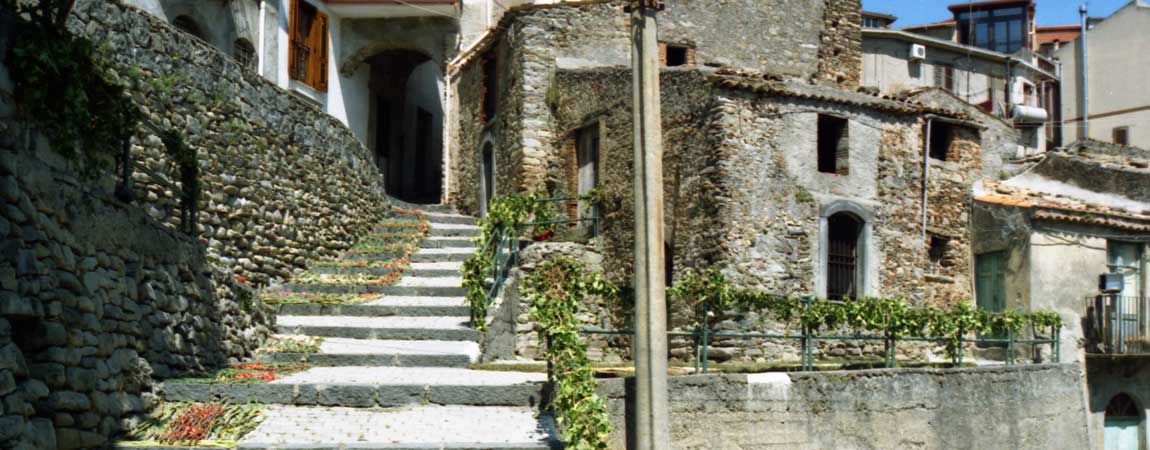
San Piero Patti is a characteristic village in the province of Messina which has about 2700 inhabitants and offers many scenic and historical beauties.
It is part of the Tindari Nebrodi inter-municipal consortium and has a lot to offer to people who choose it for a stay.
The heritage left by the Arabs in San Pietro Patti
San Piero Patti like many other places in the Sicilian territory, over the centuries has had to deal with numerous foreign dominations which have enriched it in terms of culture, traditions and monuments. In particular, much was left by the Arabs in the highest part of the historic center, located in the area where there was once a beautiful castle, there are numerous things to see for a real route with a structure of the time that is still appreciable today. All the area that had been settled by the Arabs, today called Arabite, is characterized by the classic plots of urban development of Arab culture.
In the small alleys that develop one after the other, there are still many elements that bring back to that period such as some parts of the ancient pavements and the conception of space which is diametrically opposed to that of the Hellenistic era of the polis. At one time this part of the town was developed in three main sectors, with the military district placed higher up for obvious logistical reasons, while the residential part with a concentric development that made it possible to unite what were once the two main entrances to the city. Also in the easternmost part were all the manufacturing and craft activities.
The path of Gagini and the Tholos of San Piero Patti
In this part of Sicily, as in many other communities, there are works created by the famous artist Antonello Gagini and by his pupils.
It is a sculptor and architect from Palermo who has made an important contribution to the Italian Renaissance with many extraordinary works. His imprint of the territory begins in the year 1498 when he decides to open his first one in Messina marble sculptor workshop, although his most important works were made in Palermo such as the grandstand for the Duomo. However, in San Pietro Patti, there are still many sculptures and works created by his pupils today present in all the churches and therefore available to the visitor without any kind of constraint. On the territory there are other elements of great interest such as the tholos, also known in jargon with the name of cubburi. These are small stone buildings with a circular development. They are of interest because they were built dry and because of the presence of futuristic architraves in terms of architectural conception and because they tell of how life went on in these areas where agriculture was certainly important.
The historic craft route and the castle of San Piero Patti
San Pietro Patti is also history, tradition and a culture based on many peasant trades which were once the basis of the local economy.
La medieval history of this small village is exalted during the big one parade with citizens wearing period costumes and with the possibility for visitors to be able to appreciate the structures that were once used to carry out work of any kind within special locations. There are products used a long time ago such as soap at home or tools for those who enjoyed weaving, making baskets, exploiting the potential of the silkworm or by those who worked as a tinsmith.
All of this is present in the Living Anthropological Museum.
San Pietro Patti, however, is also the location in which the castle to guarantee maximum protection and the possibility of best defending oneself against possible attacks by enemies. It was an extraordinary castle among the best existing throughout the Sicilian territory for the quality of the architectural structure, but also for the decorations and the many frescoes available in the various rooms. Near the main structure there was a majestic tower in which the soldiers lived, imposing walls that were difficult to attack. Today, however, there are only i remains of that castle which according to sources was abandoned over the centuries even if it remained standing until 1860. In fact, on that date the inhabitants of the town decided to demolish it to use its stones for the construction of houses in order to save costs.
However, this area has kept the name of Castle, just to remember that important and imposing structure.
Philip Accordino, CC BY-SA 3.0, via Wikimedia Commons









